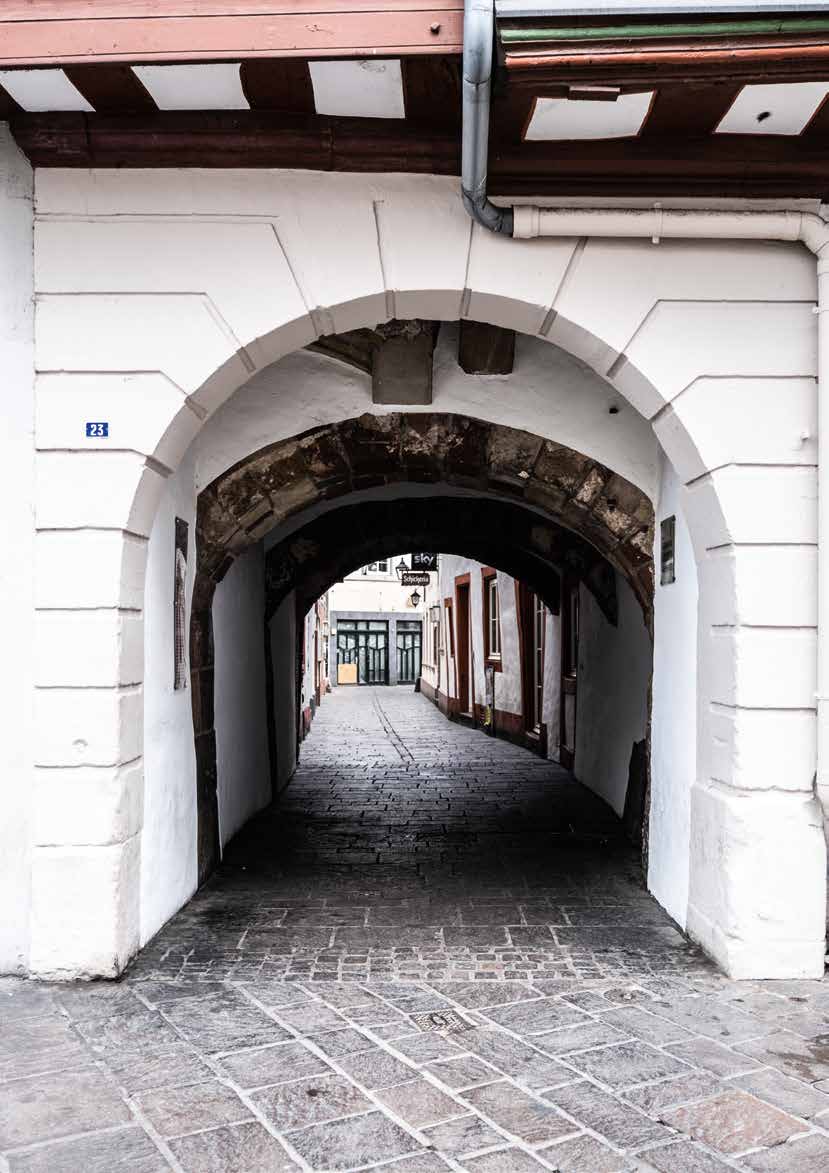Small Jewish Gate
The Small Jewish Gate served as one of several entrances to the Jewish quarter in medieval Trier. Jewish life has been documented here since 1066. However, it is assumed that there was already a Jewish community in late antiquity. Several small archaeological finds bear witness to this, including an oil lamp depicting a menorah and lead seals from amphorae containing oil from Palestine, which was used for ritual purposes.
The Jewish quarter was relatively large, having about 60 houses, synagogues, a community hall and a mikveh, or ritual bath. Under Archbishop Balduin of Luxembourg, the quarter reached its heyday in the 14th century, when about 300 people lived here. It should be emphasised that it was not a ghetto, it could be closed off, but from the inside. Even today you can see a device for attaching a chain on both sides. These were at all entrances, and so the "Eruv" could be kept even on the Sabbath: One completely enclosed the neighbourhood, thus creating a common home and thus had no overlap of private and public life, because the rules for the Sabbath said, for example, that one should not carry objects from the private to the public space, and so one circumvented this rule by closing the neighbourhood to the outside.
The first outrages against the Jewish population occurred in the Middle Ages in connection with the 1st Crusade at the end of the 11th century. The next severe persecutions took place in the 14th century in connection with the plague pogroms. There were also numerous raids in Trier and a large part of the Jewish population had to flee. Many Jews emigrated to Poland or settled in areas that were not under electoral rule. Resettlement did not take place until the 17th century, but the Jewish quarter no longer existed at that time; from then on, the Jewish population lived among Christian families.
Author: Justine Duda M.A.
Editorial staff: Prof. Dr. Frank G. Hirschmann
Please note: As soon as you watch the video, information about it is transmitted to YouTube/Google. You can find more information on this at Google Privacy.
